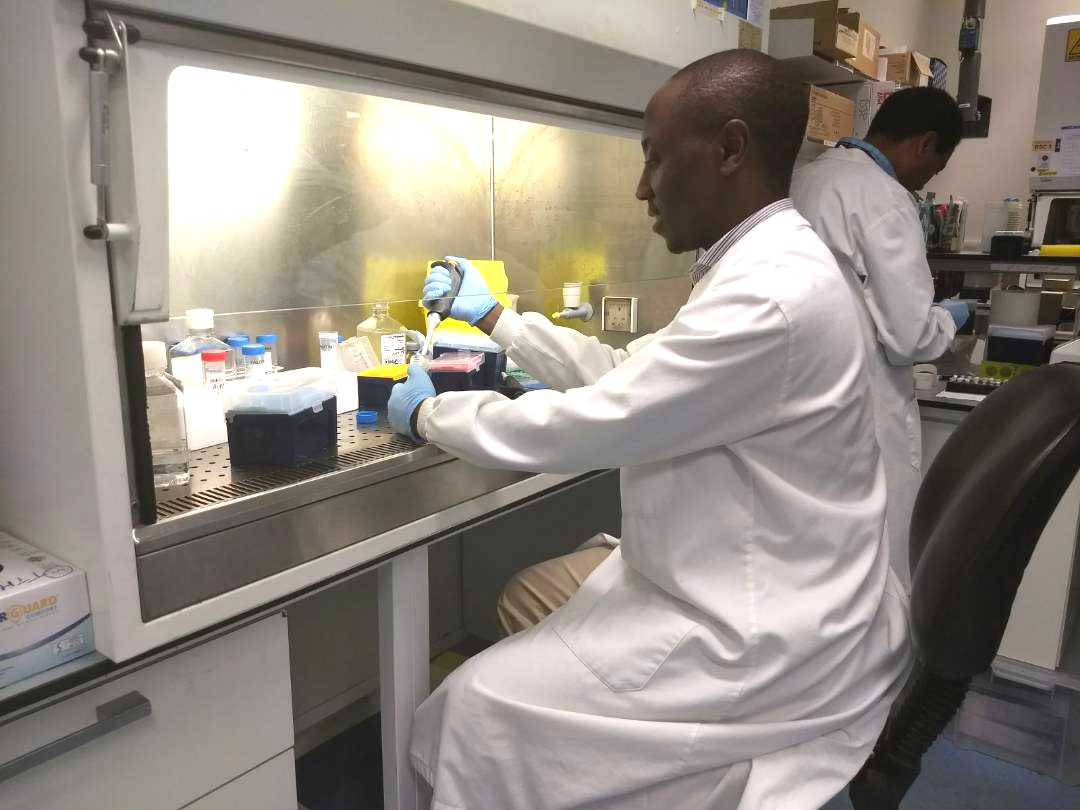Throughout his years as an infectious disease physician and researcher, Dr. Jonathan Mayito has realized a big gap in the diagnosis of asymptomatic (latent) Tuberculosis infection and monitoring of treatment response among treated patients. Consequently, many people with the infection progress to active TB within two years and if one is HIV infected, their risk of acquiring the infection is 20 times more than the HIV negative person, and their risk to progress to active TB is about 10% in a year. Thus, in his PhD study titled: ‘Detecting mycobacterium TB in stem cells in latent infection,’ Dr. Mayito is proposing to develop a new innovative diagnostic test for TB infection. His PhD research is being funded by THRiVE (Training Health Researchers into Vocational Excellence in East Africa).
The World Health Organization (WHO) defines Latent TB infection as a state in which individuals harbor TB-causing bacteria without evidence of manifestation of symptoms of active disease. WHO estimates that 1.7 billion people worldwide have the latent infection and up to 15% of these will progress to active TB in a lifetime. The current prevalence for latent TB in Uganda is estimated to be at 65% of the population and it remains one of the major contributors to cases of active TB.
Despite the high risk that the infection pauses to the Ugandan population, it remains difficult to diagnose because existing tests such as the Interferon Gamma Release Assay (IGRA) and Tuberculin Skin Test (TST) have low specificity and prediction of who will progress to active TB.
“These tests can remain positive even when the individual has been cleared of the infection. They only tell us that the person has previously been in contact with TB but they won’t tell us if the individual continues to carry the infection,” Dr. Mayito explains.
He adds that these tests cannot be used to monitor response to treatment of latent TB and thus health workers may not be able to tell who is cured or not cured of the TB infection. Therefore, through his PhD research, he is looking to develop a new diagnostic test to detect latent TB in the body’s stem cells (the mother cells for all the body cells) found in the bone marrow. The stem cells are being targeted because they have properties to attract TB to hide in them during a latent infection, including; ability to protect the TB in them from the immune system attack and lack of mechanisms to kill the TB that has infected them. Additionally, the bone marrow where they thrive has low Oxygen concentration which encourages TB to become dormant and persist for long.
“As the stem cells move out of the bone marrow to develop into the different body cells, they may release the dormant TB in them and seed it in the different parts of the body. If the conditions are favorable, the dormant TB will reactivate and progress to active TB,” Dr. Mayito explains.
Thus, the proposed diagnostic test seeks to identify the TB itself rather than an immune response that existing tests seek, and thus is going to be more specific and predict better who is at risk of progressing from latent infection to active disease. Furthermore, the test will monitor response to the latent TB treatment through determination of clearance of the TB DNA (genetic material) found in the cells.
For his study, a sample population of 120 individuals are being examined. These are mostly household contacts of TB patients who are not exhibiting any signs and symptoms of the disease. Of these, half are HIV positive.
As the world commemorates World Tuberculosis Day on March 24 2020, Dr. Mayito’s innovation casts a ray of hope in the diagnosis of latent TB.

